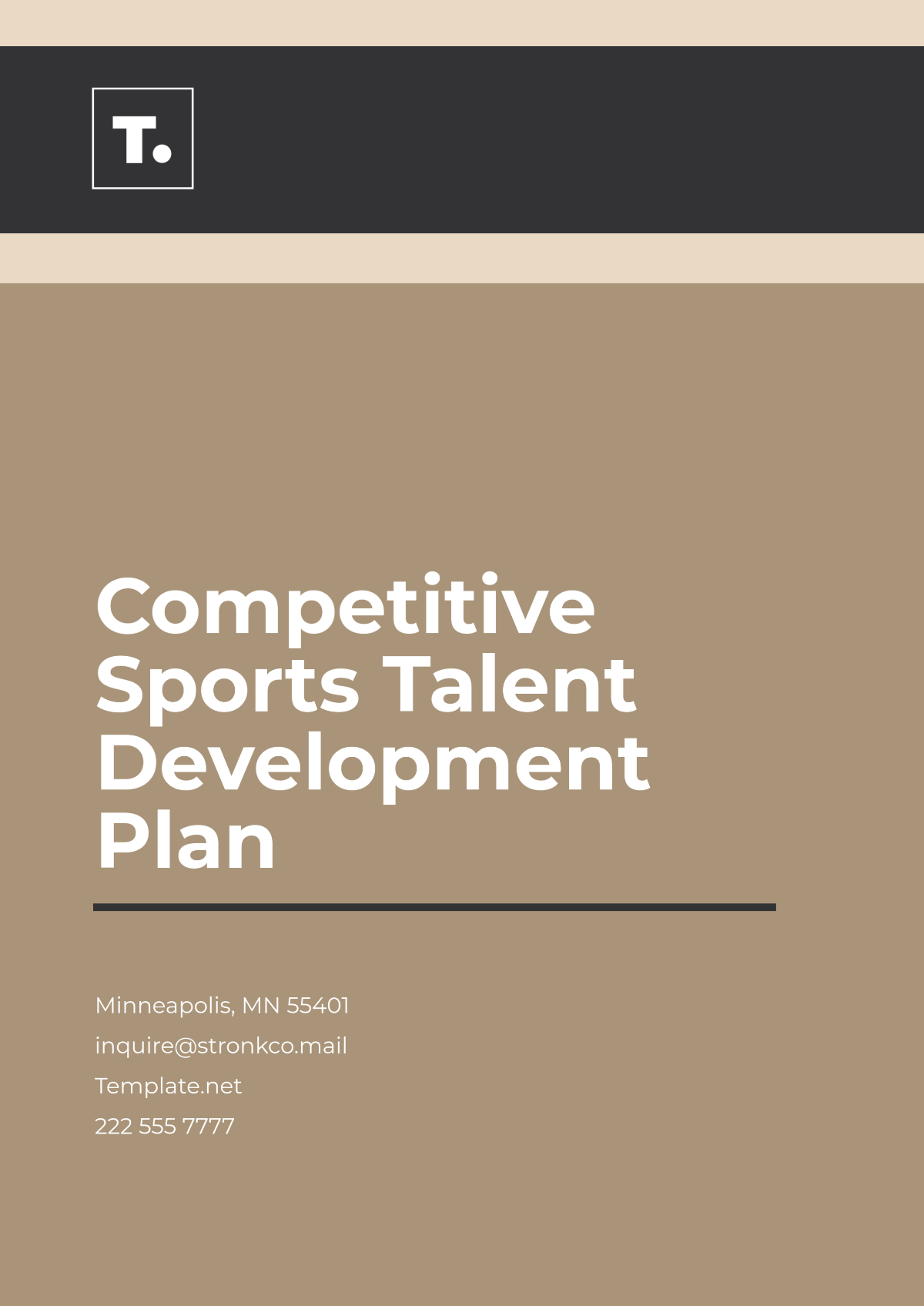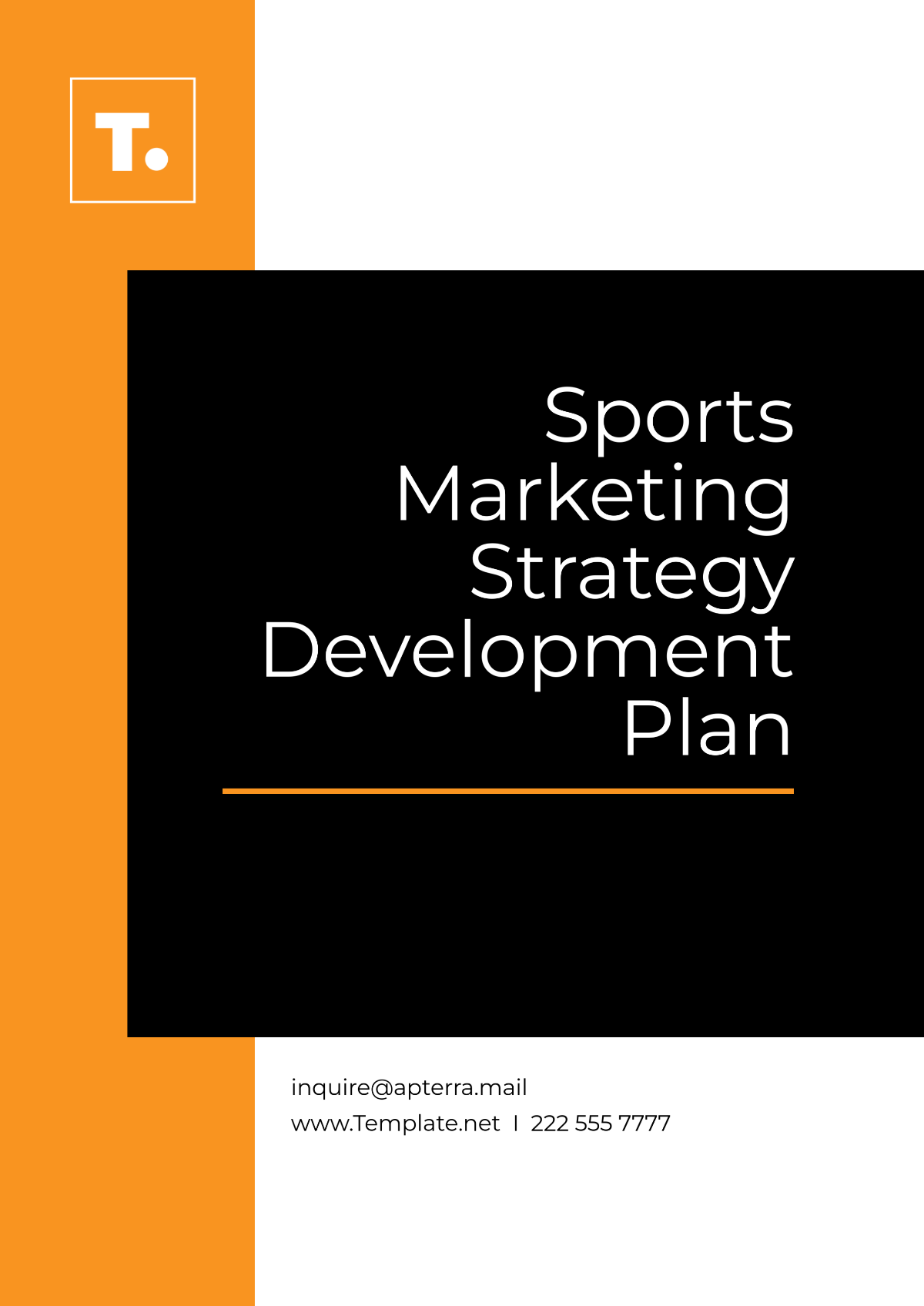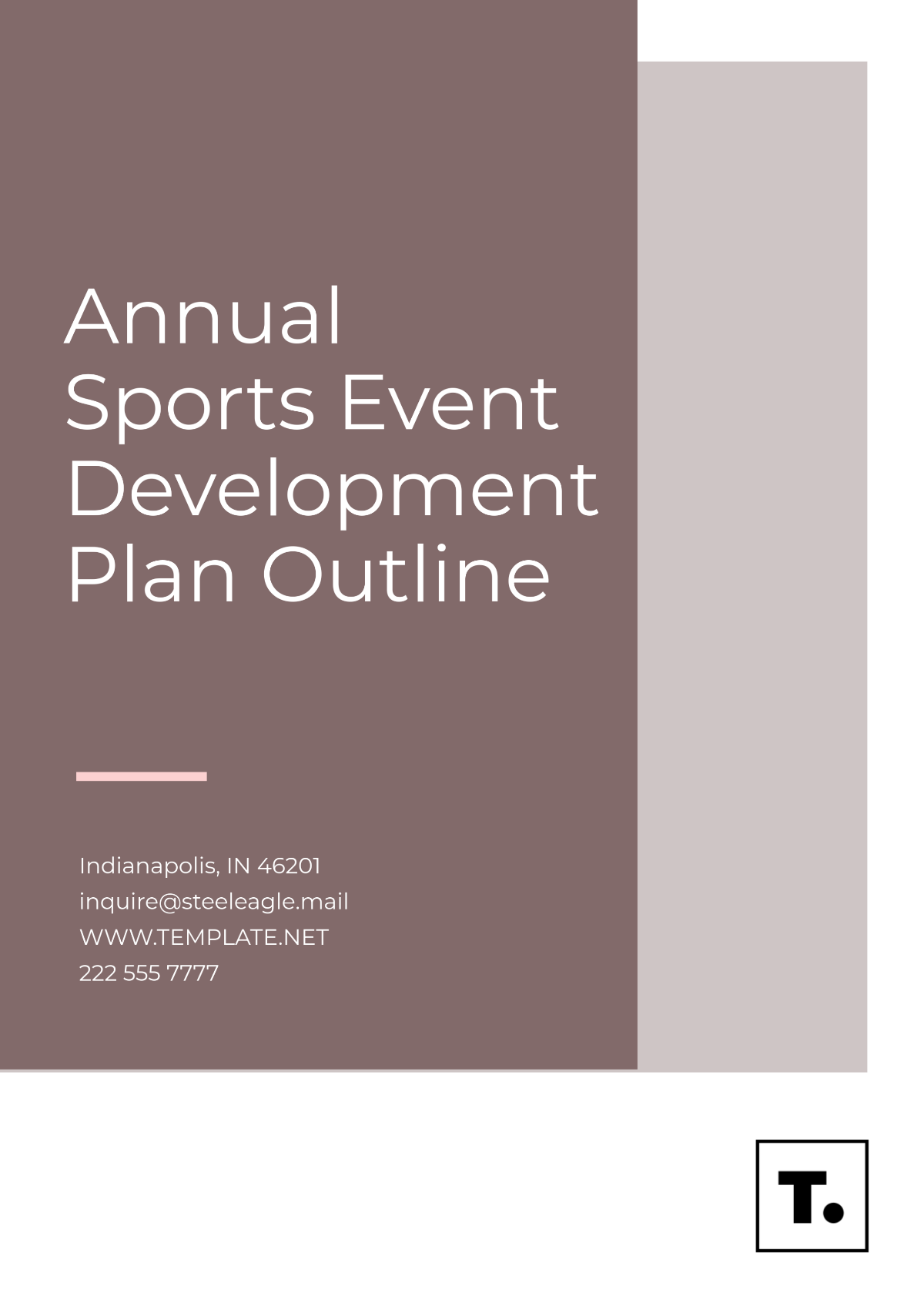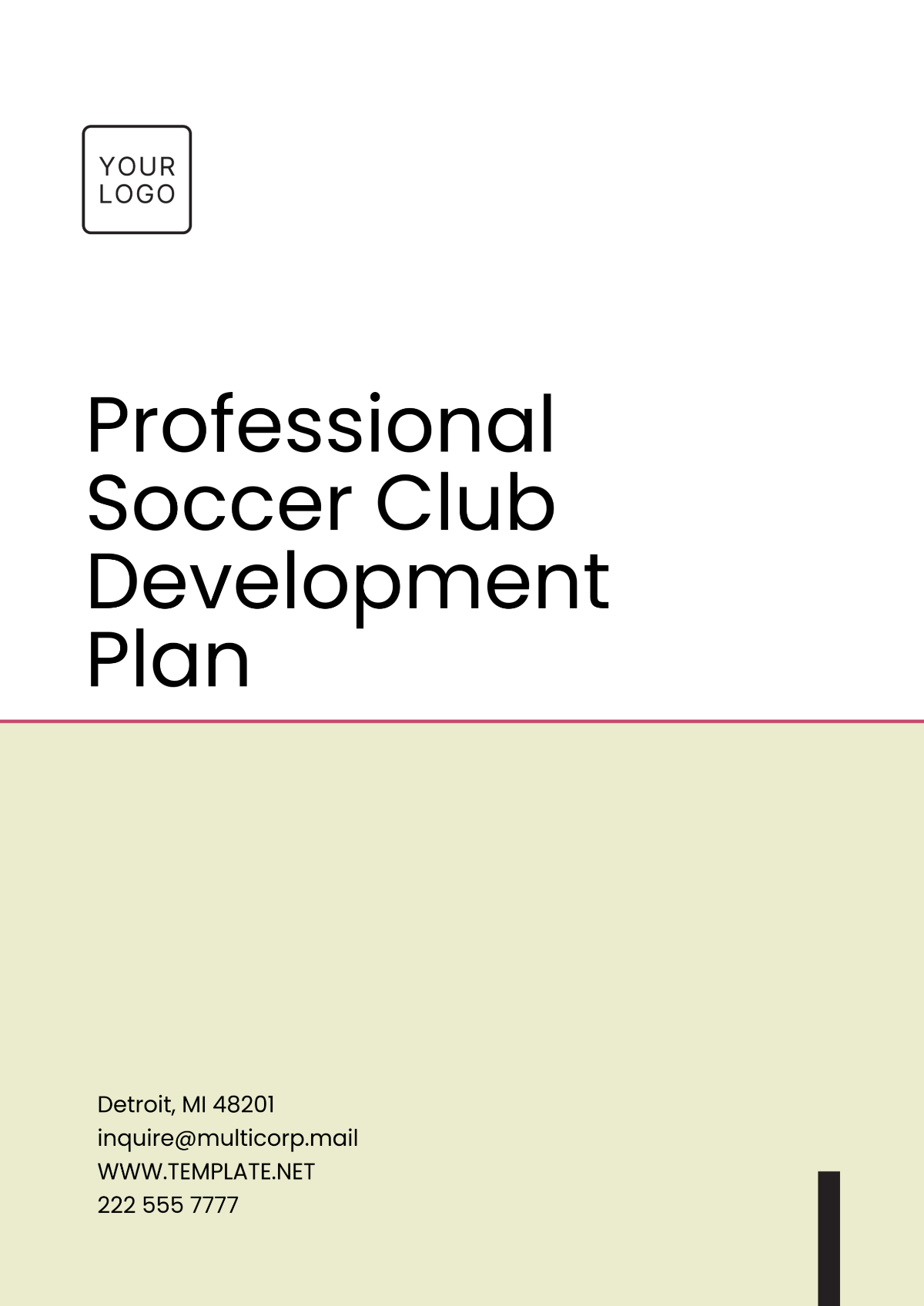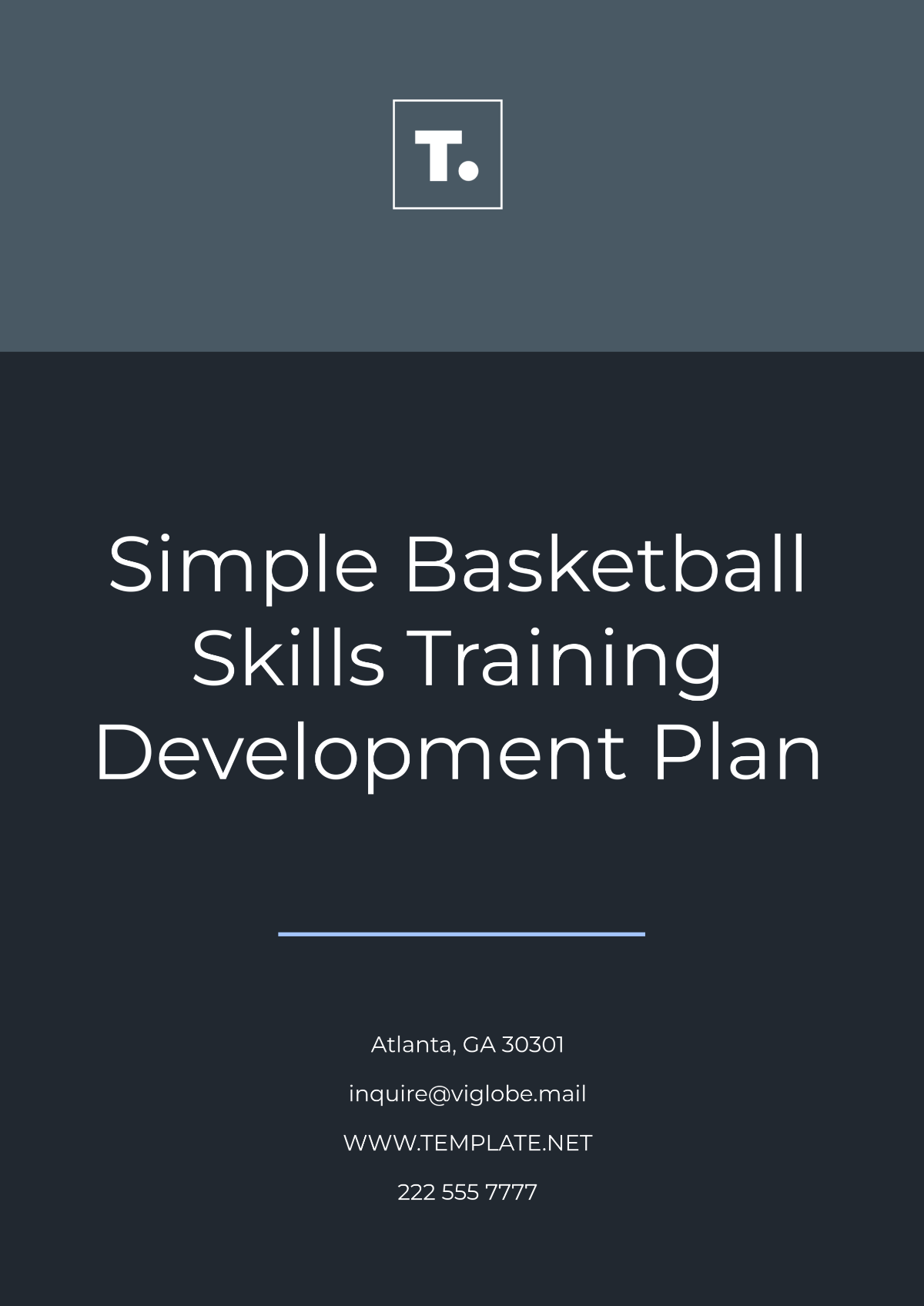Athlete Training and Development Plan Design
Prepared by: [Your Name]
Date: June 20, 2050
1. Introduction
This Athlete Training and Development Plan is designed to provide a structured and holistic approach to helping athletes achieve peak performance. By integrating physical training, mental conditioning, nutritional strategies, recovery techniques, and career development, the plan focuses on maximizing athletic potential while ensuring overall well-being and long-term career success.
2. Physical Training
A. Strength and Conditioning
Strength and conditioning are critical for improving performance and preventing injury. Athletes must engage in targeted exercises to build muscle strength, increase power, and enhance endurance. Periodized training phases ensure progression and avoid overtraining.
Phase | Objective | Duration |
|---|---|---|
Preparatory | Build foundational strength and endurance | 4-6 weeks |
Competitive | Optimize strength and power for competition | 4-8 weeks |
Transition | Active recovery and injury prevention | 2-4 weeks |
B. Key Components:
Resistance Training: Focus on compound movements (squats, deadlifts, presses) for strength and muscle growth.
Plyometrics: Explosive exercises like jumps and sprints to enhance agility and power.
Core Strengthening: Exercises to build a strong core, which is essential for stability and injury prevention.
C. Flexibility and Agility
Flexibility and agility are crucial for improving movement efficiency and reducing injury risk. Regular practice should include:
Dynamic Stretching: Pre-activity stretches to increase blood flow and joint mobility.
Yoga: Enhances flexibility, mental focus, and body awareness.
Plyometrics: Builds quick reaction times and explosive movement.
3. Mental Conditioning
A. Goal Setting
Goal setting is the foundation for athletic success, providing clarity and direction. Employ the SMART criteria (Specific, Measurable, Achievable, Relevant, Time-bound) for both short-term and long-term goals.
Short-Term Goals: Specific to upcoming events or training objectives (e.g., improve sprint time, increase lifting weight).
Long-Term Goals: Focus on career milestones (e.g., make the national team, achieve a championship title).
B. Visualization and Focus Techniques
Mental preparedness is vital for athletes to succeed under pressure. Visualization techniques involve imagining successful performance scenarios. Focus drills improve concentration during training and competition.
Mental Imagery: Visualize successful outcomes, training sessions, and key moments in competition.
Breathing Techniques: Use deep breathing and mindfulness to maintain focus and reduce anxiety.
Concentration Drills: Enhance the ability to stay focused in high-pressure situations.
4. Nutritional Strategies
Proper nutrition fuels training, aids recovery and supports long-term health. Tailoring macronutrient intake and ensuring adequate hydration is essential for peak performance.
A. Macronutrients
Proteins: To aid in muscle repair and growth, you can consume sources like lean meats, fish, and plant-based proteins.
Carbohydrates: Whole grains, fruits, and vegetables serve as the primary energy sources during intense workouts.
Fats: Aid in hormone production and energy storage, such as with avocados, nuts, and seeds.
B. Micronutrients
Vitamins and minerals are vital for metabolic processes, immune function, and reducing fatigue. Special attention should be paid to iron, calcium, and vitamin D for bone health and performance.
C. Hydration and Supplementation
Maintaining proper hydration is crucial for keeping energy levels up and avoiding dehydration while exercising, and appropriate use of supplements such as protein powder, electrolytes, and multivitamins can enhance performance and recovery.
Hydration: Ensure athletes consume 2-3 liters of water per day, adjusting for intensity and climate.
Supplements: Tailor supplementation plans according to personal requirements, such as creatine, BCAAs, and omega-3s.
5. Recovery and Injury Prevention
A. Rest and Sleep
Recovery is as important as training. Quality sleep (7-9 hours per night) supports muscle recovery, mental clarity, and overall health. Strategies to improve sleep include:
Consistent Sleep Schedule: Going to bed and waking up at the same time each day.
Sleep Environment: Dark, cool, and quiet conditions to promote deep sleep.
B. Rehabilitation and Physiotherapy
Regular physiotherapy and rehabilitation are essential for managing injuries and preventing future problems. Programs should include:
Prehabilitation: Exercises designed to strengthen weak areas, such as shoulders and knees, to prevent injury.
Active Recovery: Light activities like swimming or cycling to maintain blood flow without straining muscles.
Injury Management: Immediate treatment for acute injuries and a tailored recovery plan to ensure a return to full activity.
6. Career Development
A. Education and Skill Development
Athletes should be encouraged to pursue continuous learning and skill development, both within and outside their sport. Opportunities include:
Vocational Training: Coaching, sports medicine, or fitness instruction.
Personal Development: Public speaking, media relations, and leadership skills.
Academic Education: Support for completing educational degrees, online courses, or certifications.
B. Financial Planning and Management
Financial security is essential for athletes, particularly as career lengths can be unpredictable. Athletes should be educated about financial management:
Budgeting and Savings: Setting up accounts for long-term savings and investment planning.
Investment Strategies: Understanding the importance of investing for future financial independence.
Tax Planning: Managing income from sponsorships, competitions, and endorsements.
7. Holistic Development
A. Emotional Well-being and Mental Health
An athlete's mental health is a critical component of overall performance. Emotional resilience can be developed through:
Mindfulness and Meditation: Practices to manage stress, improve focus, and enhance emotional balance.
Mental Health Support: Access to counseling or sports psychologists to help with mental health challenges like anxiety, depression, or burnout.
B. Social and Family Support
A strong support system of family, friends, and teammates helps maintain an athlete’s motivation and well-being.
Building Strong Relationships: Fostering connections with peers and mentors for emotional support.
Balancing Family and Sport: Strategies to manage time effectively between athletic commitments and family obligations.
8. Performance Monitoring and Assessment
To ensure progress, regular assessments are necessary:
Physical Assessments: Strength, speed, agility, and flexibility tests to measure improvements.
Mental Assessments: Psychological evaluations to track mental readiness and resilience.
Nutritional Reviews: Periodic meetings with a nutritionist to adjust diet plans based on current training goals.
9. Conclusion
This Athlete Training and Development Plan integrates a comprehensive approach to physical training, mental conditioning, nutrition, recovery, and career planning. Addressing all aspects of an athlete's life and career ensures they can perform at their peak while maintaining long-term health and achieving success both in and outside of sport. Regular updates and individualized adjustments to the plan will help athletes adapt to their evolving needs and challenges.














